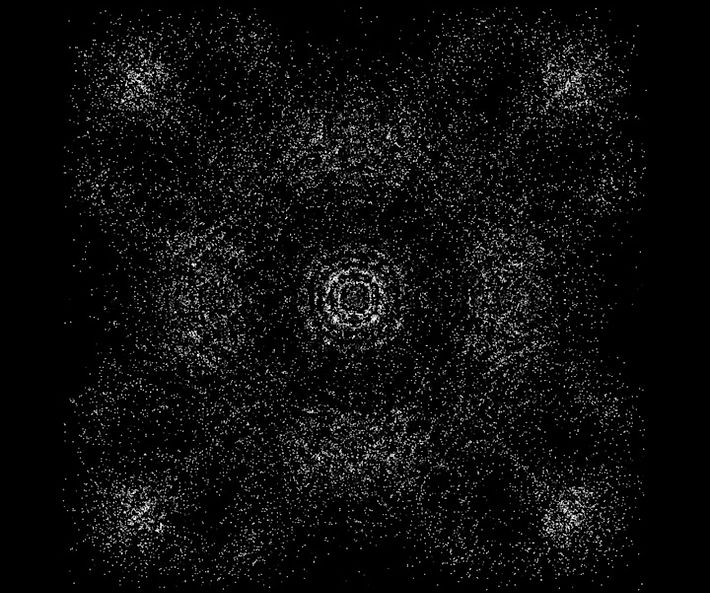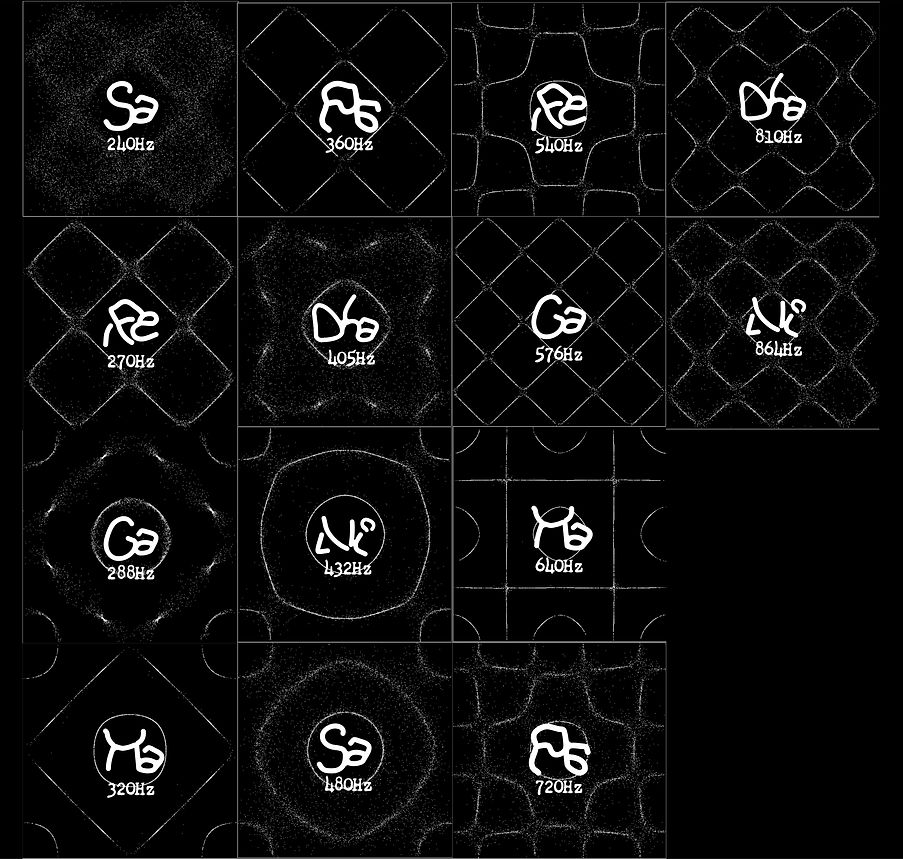

and of how vibration moves through matter and leaves behind form. In the late 18th century, Ernst Chladni uncovered this phenomenon by drawing a violin bow against metal plates dusted with sand. The sand shifted and settled into delicate patterns, each one a silent imprint of sound.
“Cymatics is the study of visible sound"
These figures, now known as Chladni patterns, revealed a simple truth: each frequency holds its own geometry. The higher the pitch, the more intricate the form. What emerges is not just a scientific curiosity, but a visual language of resonance, a way for sound to be seen, as well as heard.
"From here, the question arose: could each note of the Sargam (indian classical scale system) be visually translated?"
Rather than relying on the traditional personification seen in Ragamala paintings (where each raga is depicted as a character), we shift towards a more abstract, sound-based approach.
By translating each swara (note) in a raga into its corresponding Chladni pattern, formed by its unique frequency, we establish a visual starting point—think of it as a graphic grid system, rooted in vibration itself. These frequency-based patterns act as the structural foundation for our visuals.
From there, we allow space for spontaneity to enter, just as improvisation is a vital element of Indian classical music. Like a raga, bound by structure, yet open to interpretation, our process balances form with creative freedom, reimagining the essence of these musical forms.
Thus, we began exploring...
















